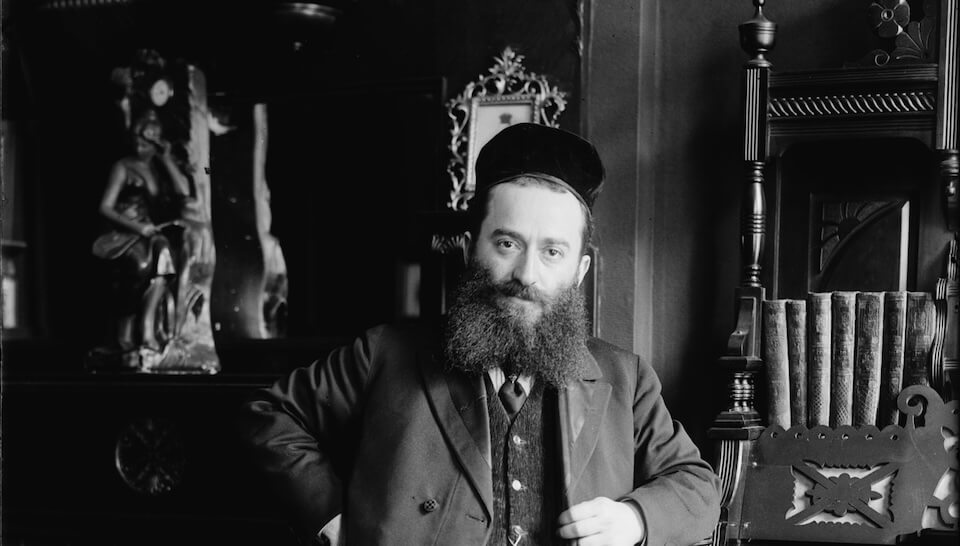What this convert to Christianity wrote about the Jews
Haym Isaac’s 1836 book on the folklore of the Polish and German Jews was so popular, there were three editions of it.

Image by Yehuda Blum
This article originally appeared in the Yiddish Forverts.
In 1836, a man called Haym Isaacs published a book in England called “Ceremonies, Customs, Rites and Traditions of the Jews.” The book — a warm portrayal of the folkways of the Polish and German Jews — was so popular that two more editions were published.
What’s remarkable about this book is that Isaacs was a Jewish convert to Christianity. Generally, when Jews who converted out wrote books about Judaism, their tone was bitter and the text was often filled with exaggerations and downright lies.
Isaacs’s book, though, revealed that he still had a warm spot for the Jews and would even occasionally complain: Why didn’t Christians behave more like the Jews?
When English novelist George Eliot read Isaacs’s book as part of her research while writing “Daniel Deronda”, she remarked in her notes that “this writer… seems in spite of his conversion still to love the Jews better than the Christians.” The fact that Isaacs never changed his name after converting, as was the practice among all Jews who converted to Christianity in England, was further evidence of his continuing loyalty to the Jews, she added.
Isaacs’s book includes fascinating descriptions and interpretations of the traditions practiced by Polish Jews at the beginning of the 19th century. In his description of a Jewish wedding, for example, he writes that the groom steps on and breaks a glass “to remind them of death… and, therefore, to induce them to lead such a life as not to be terrified at the approach of death.” Isaacs doesn’t mention at all the usual explanation — to remind us of the destruction of the Temple in Jerusalem.
Another tradition that Isaacs describes poignantly is chalitzah: An ancient ceremony conducted when a childless woman is widowed. According to the Torah, the widow must marry her deceased husband’s brother, but if that brother doesn’t marry her, both he and the woman need to complete the chalitzah ceremony in order to be free to marry other people. Among the Orthodox, this practice is still carried out today.
Isaacs describes chalitzah in the following way: Before a court of three rabbis, the brother puts on a shoe made of black cloth, knitted in a certain way. He then removes the shoe to unravel it, “a very troublesome job. For he must unravel it, by making use only of his two thumbs and two little fingers.”
Certain Jewish museums display chalitzah shoes as part of their exhibits. In my grandmother’s memoirs, she writes that in chalitzah ceremonies in her town, the widow would have to unravel a difficult knot. There’s no mention at all of a shoe.
In a chapter about the bar mitzvah traditions of his time, Isaacs writes that on the day following the celebrations, the boy’s father must either send his son off to learn a trade or provide him with merchandise to sell in order to become a merchant, forcing him suddenly to bid farewell to his childhood.
It’s clear that the author was well-versed in Jewish law, perhaps even a scholar, before converting. He was intimately familiar with the Talmud and Midrash, and even Kabbalah. When he explains the Jewish belief in the Messiah, he gives all the details: “When the Messiah blows his trumpet in Jerusalem the sound will be so great, that the Jews living in different parts of the world will hear the sound thereof; and that very moment will be transformed into angels, and by the power of God, be transferred to Jerusalem, where the Messiah will reign over them… for Jerusalem they look upon as their paradise. And all the Jews, who have died and been buried since the creation of the world, will work their passage under ground the same as moles, and rise on the same spot where the temple stood in the days of old.”
Isaacs mentions other interesting traditions. On Purim, Polish synagogues would collect money for rabbis in Jerusalem. When a Jew died, they would drop soil brought over from Israel over his eyelids. To ensure that the soil was authentic, they would upon receiving the soil place certain items into each barrel of soil — a knife, some fabric — and make note of it so that later they wouldn’t be fooled by plain soil that might have been swapped with the holy soil.
He describes another unfamiliar tradition: After a woman blesses the Shabbat candles, she walks around the candlesticks three times with raised hands and blesses God for his commandments.
Isaac even describes traditions practiced by the British Jews during the 1830s. In England, women didn’t bake their own challah during the week — the bakeries did it for them. But on Thursday evenings and Friday mornings, there was sure to be a Jewish supervisor overseeing the baking.
Isaacs also writes at length about traditions regarding the ill and the dead. When blessings were recited for the infirm in the synagogue, their first names were often changed in order to deceive the Angel of Death. If the sick person recovered, he would enter the synagogue the following Shabbat and give a generous donation to charity.
The author may have abandoned the Jewish faith but “Ceremonies, Customs, Rites, and Traditions of the Jews” proves he never abandoned the Jewish people.





















